Lakes are bodies of water surrounded by land. With more than a hundred million lakes covering 4% of the Earth’s surface, there are lakes on every continent on Earth. To know which ones are the largest, we often rank them by volume, surface area, or depth. Lakes with small sizes are often called “ponds” while some lakes are big enough to be called “seas.” But measuring the exact volume of a lake can be quite challenging because lake volumes dramatically fluctuate from year to year due to environmental changes.
However, some massive lakes have fairly constant volumes every season. They are the largest lakes by volume in the world, and they individually contain more than 24 cubic miles of water. The total volume of Earth’s lakes is about 47,743 cubic miles. Notably, the largest body of water in the world (both by volume and surface area) is the Caspian Sea, often described as the world’s largest lake. However, this status is controversial as it was declared by its basin countries as “neither a sea nor a lake.” With a water volume of 18,761 cubic miles, the Caspian Sea surpasses every other lake in the world – holding more than three times the volume of all North America’s Great Lakes combined!
In this article, we bring to you the 10 largest lakes in the world ranked by volume. You’ll also discover how wide and deep they are — so brace up ‘cos your jaws might just drop!
The 10 Largest Lakes by Volume in the World

1. Lake Baikal
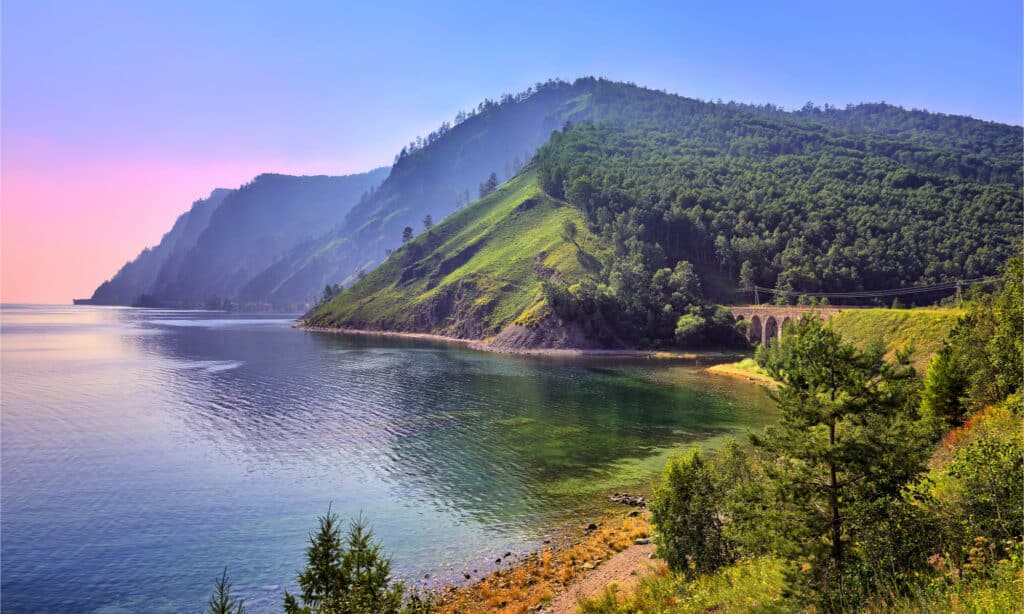
Lake Baikal is not only the largest lake by volume in the world, it’s also the oldest and deepest.
©Nikitin Victor/Shutterstock.com
Lake Baikal has the largest volume of all the lakes in the world, with an average water volume of 5,670 cubic miles. It contains 22-23% of the world’s fresh surface water — more than all of the Great Lakes combined. It’s also the world’s deepest lake, with a maximum depth of 5,387 feet. Located in Siberia, Russia, it’s the world’s oldest lake with a history dating back to 25 million to 30 million years. In 1996, UNESCO declared Lake Baikal a World Heritage Site.
2. Lake Tanganyika
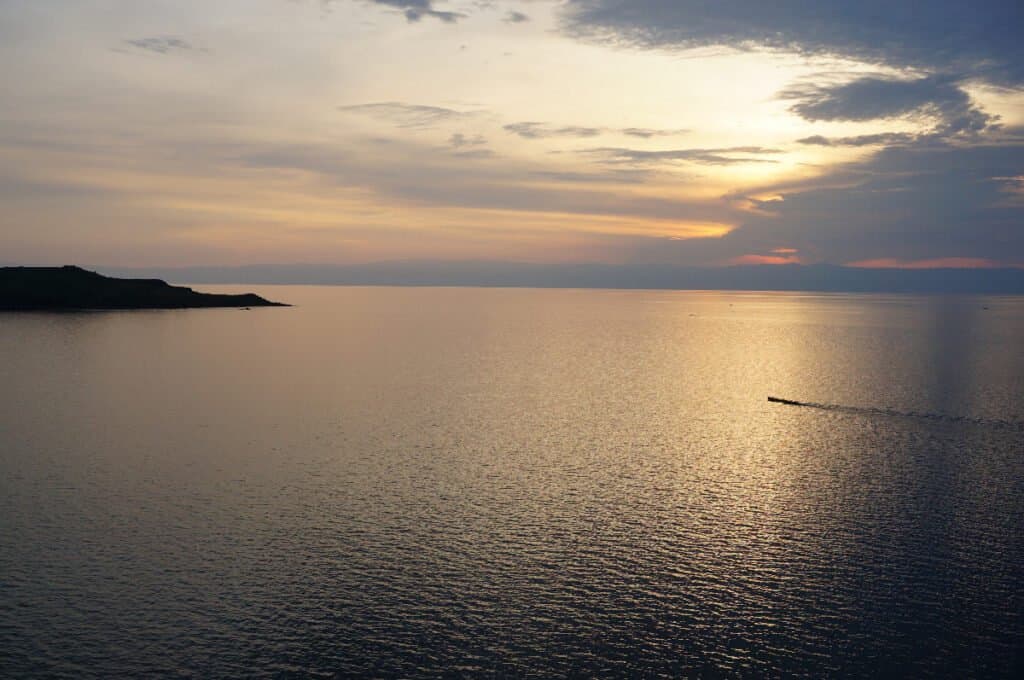
Lake Tanganyika is the second-largest lake by volume in the world and deepest lake in Africa.
©Naoki Kakuta/Shutterstock.com
The second-largest lake in the world by volume is Lake Tanganyika, shared between four countries, namely Tanzania, Burundi, Congo, and Zambia. Considered one of Africa‘s Great Lakes, this lake contains about 4,500 cubic miles of water, holding 16% of the world’s available freshwater. Lake Tanganyika is also famous for reaching a depth of 4,820 feet — making it the deepest lake in Africa and the second-deepest lake in the world.
3. Lake Superior
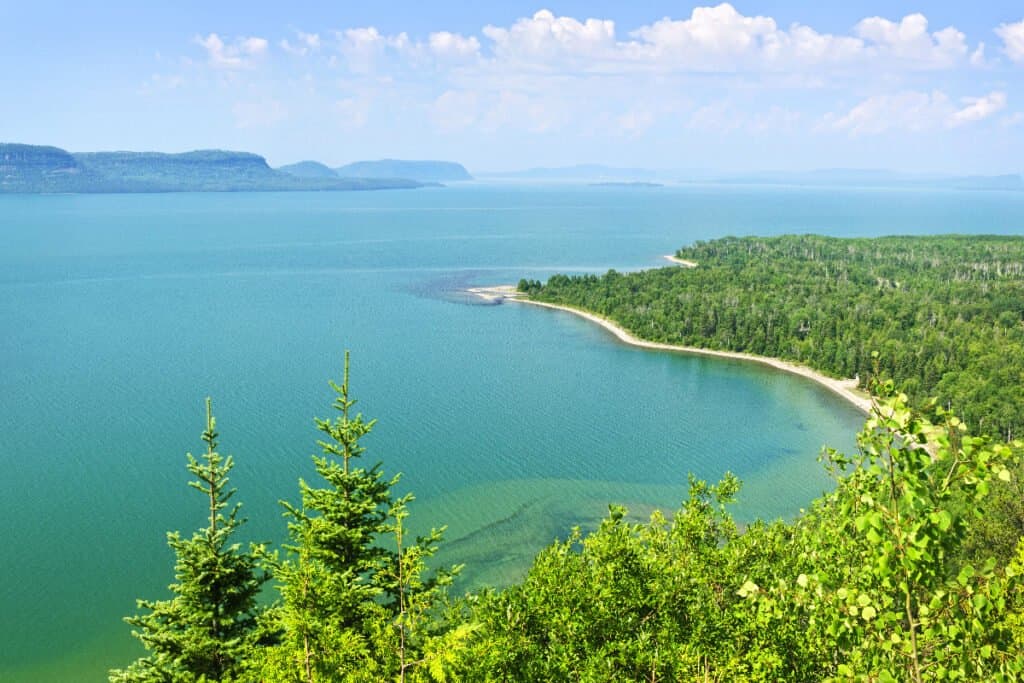
Holding 10% of the world’s surface freshwater, Lake Superior is the third-largest lake by volume.
©Elena Elisseeva/Shutterstock.com
Of all the North American Great Lakes, Lake Superior is the most superior — yes, we mean that literally. Holding 10% of the world’s surface freshwater, it is the largest of the Great Lakes and the world’s third-largest by volume. Containing 2,900 cubic miles of water and reaching a maximum depth of 1,333 feet, it has enough water to cover the entire landmass of North and South America to a 12-inch depth. In addition, Lake Superior is the world’s largest freshwater lake by surface area at 31,700 square miles, which is approximately the size of the entire state of South Carolina. It is the largest lake by volume in the United States.
4. Lake Malawi
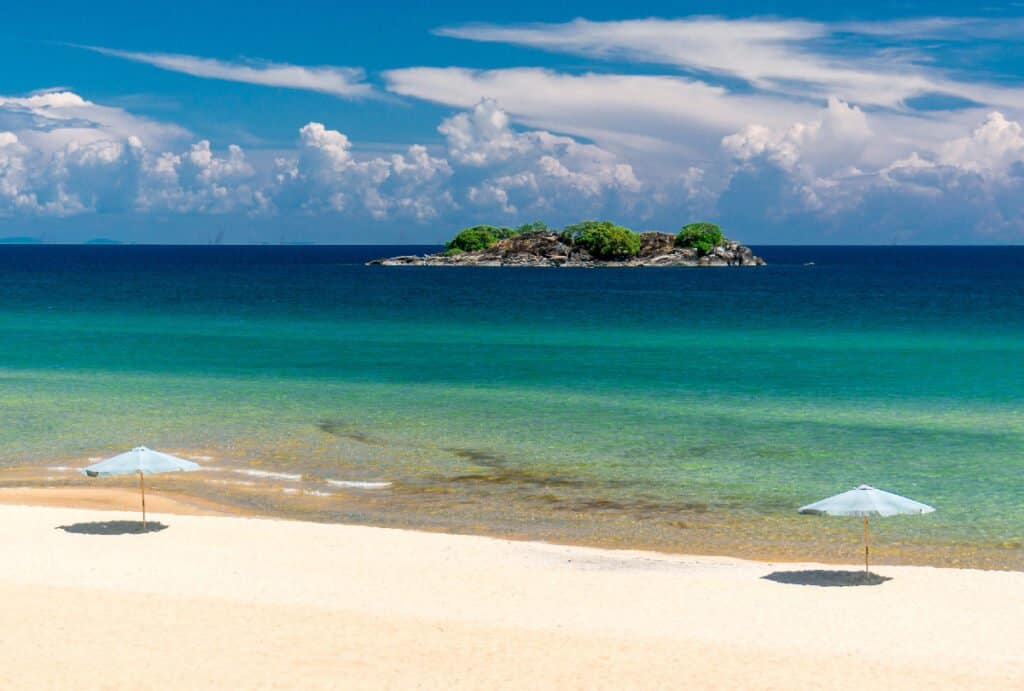
Lake Malawi is the second-deepest lake in Africa and home to more fish species than any lake in the world.
©Scott Biales DitchTheMap/Shutterstock.com
Located between three countries, namely Malawi, Mozambique, and Tanzania, Lake Malawi is an African Great Lake with a water volume of 2,000 cubic miles and a depth of 2,316 feet. It is the fourth-largest lake in the world by volume and the second-deepest lake in Africa, after Lake Tanganyika. Not only is Lake Malawi typically deep and wide, but it is also home to more species of fish than any other lake in the world, including a significant population of cichlid species.
5. Lake Vostok

Lake Vostok is the largest subglacial lake in the world.
©Goddard Space Flight Center / Public Domain – License
Antarctica has more than 400 known subglacial lakes, of which Lake Vostok is the largest. It has an estimated volume of 1,309 cubic miles, making it the fifth-largest lake in the world by volume, after Lake Malawi. At its deepest, it reaches about 1,700 feet to 3,000 feet. Lake Vostok became buried under the Antarctic thick ice sheet about 15 million years ago. NASA researchers have estimated that the entire volume of this lake is replaced every 13,300 years.
6. Lake Michigan
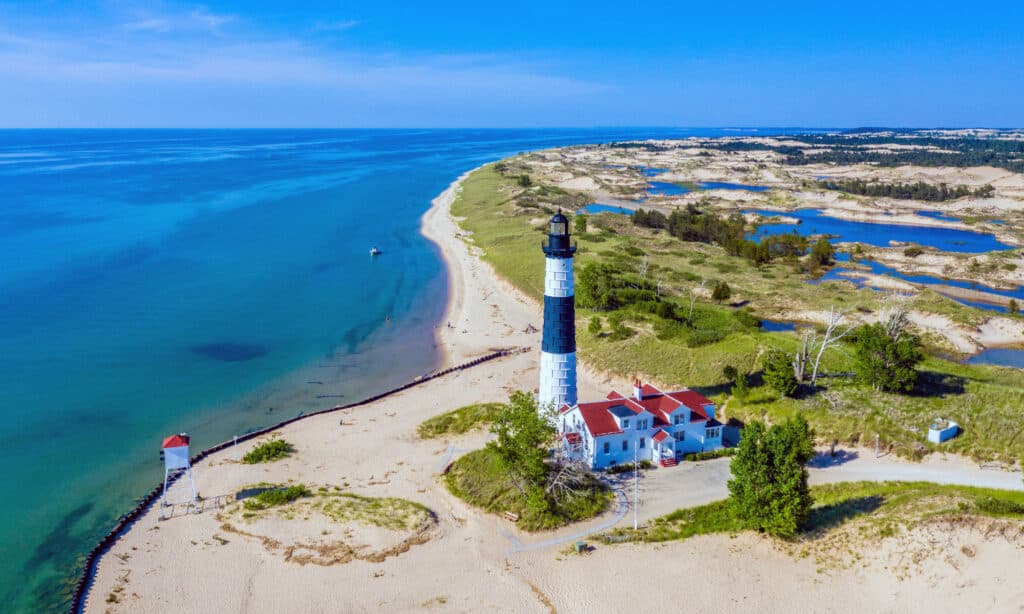
Lake Michigan is located entirely within the United States with a water volume of 1,180 cubic miles.
©Frederick Millett/Shutterstock.com
One of the five Great Lakes of North America, Lake Michigan is located entirely within the United States. With a water volume of 1,180 cubic miles and a surface area of 22,404 square miles, Lake Michigan is the second-largest of the Great Lakes by volume and the sixth-largest lake in the world by volume. Lake Michigan reaches a maximum depth of 923 feet and has a surface area of 22,404 square miles — one of the largest bodies of freshwater in the world! There are numerous cities and about 12 million people living along the shores of this wide lake.
7. Lake Huron
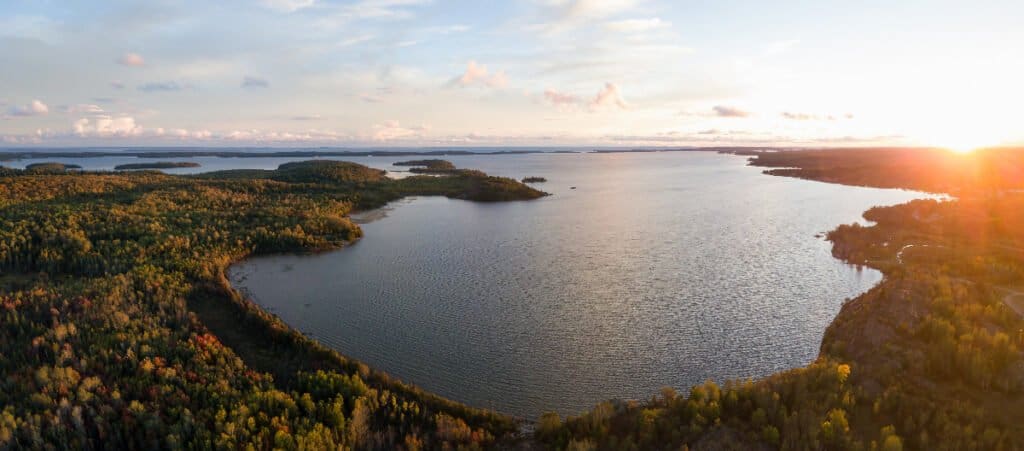
Lake Huron has a maximum depth of 750 feet and a significant history of shipwrecks.
©EB Adventure Photography/Shutterstock.com
Next on our list is Lake Huron, with a water volume of 850 cubic miles and a maximum depth of 750 feet. Lake Huron is shared by Ontario, Canada, and Michigan, United States. It is sometimes regarded as the east portion of Lake Michigan-Huron, an aggregated body of water comprising both Great Lakes. By surface area, it covers approximately 23,007 square miles, making it the third-largest freshwater lake on Earth. There are over 300 islands on its extremely long shoreline. Lake Huron has a significant history of shipwrecks, with more than a thousand recorded so far.
8. Lake Victoria
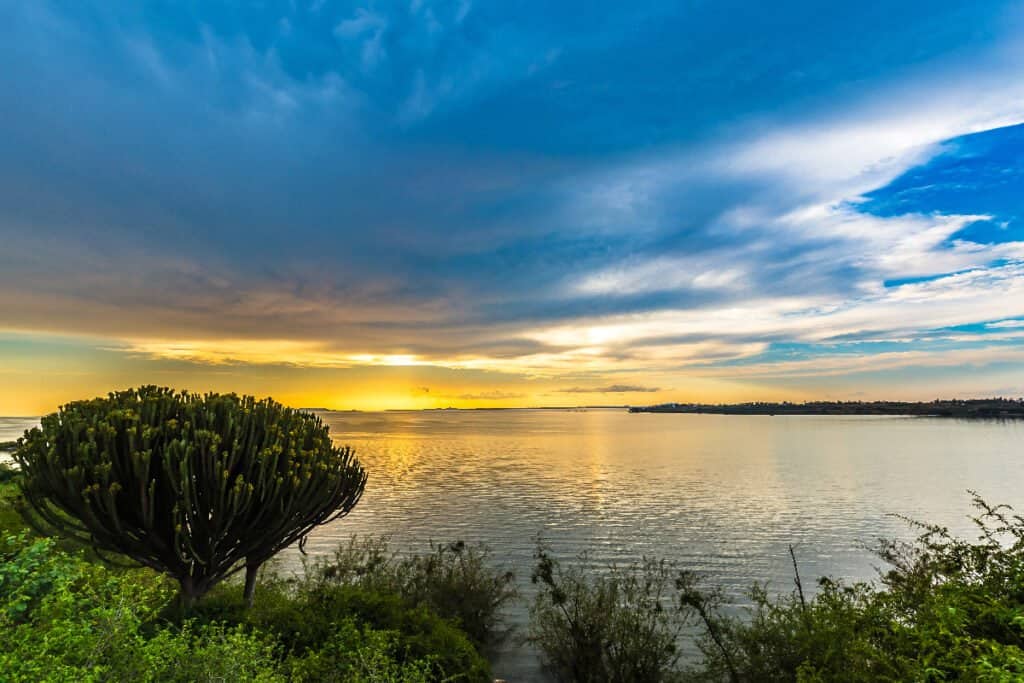
Lake Victoria has a surface area of 23,146 square miles, making it the largest lake in Africa by area.
©Stefan Haider/Shutterstock.com
Named after Queen Victoria of Britain, Lake Victoria is one of the African Great Lakes. In terms of volume, it contains about 582 cubic miles of water. By surface area, it is approximately 23,146 square miles, the largest lake by area in Africa. Lake Victoria is also the world’s second-largest freshwater lake by surface area (after Lake Superior), receiving 80 percent of its water from direct rainfall and the rest from rivers and thousands of small streams. It has a maximum depth of 266 feet. Lake Victoria is very rich in wildlife and is home to crocodiles, turtles, freshwater snails, vampire spiders, crustaceans, cichlid fish, and other native fishes.
9. Great Bear Lake

The Great Bear Lake is a protected UNESCO Biosphere Reserve.
©Kevin Lings/Shutterstock.com
The largest lake wholly within the borders of Canada, Great Bear Lake is the ninth-largest lake by volume in the world with a water volume of 536 cubic miles. The lake has clear waters, covered in ice for most months of the year. Its maximum depth is 1,463 feet and its average depth is 235 feet. The lake is inhabited by the community of Délįnę, who consider it a great part of their identity, laws, and culture. Therefore, conserving this lake is of paramount importance to them. In addition to this, the Great Bear Lake is a protected UNESCO Biosphere Reserve.
10. Issyk-Kul
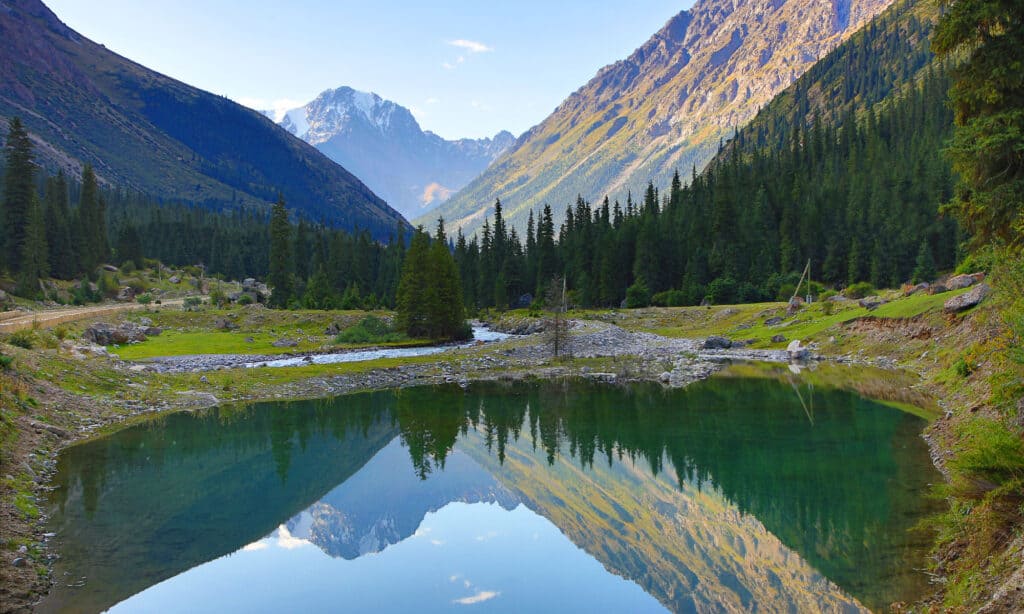
Because of its very high saline content, Issyk-Kul is considered the second-largest saline lake after the Caspian Sea.
©iStock.com/Ozbalci
With about half a million people living near it, Issyk-Kul is a large tropical lake located in Northern Tian Shan mountains in Eastern Kyrgyzstan. The name originates from the Kyrgyz language and it means “warm lake.” Containing about 417 cubic miles of water and a maximum depth of 2,193 feet, it is the tenth-largest lake in the world by volume and the seventh-deepest lake in the world. Because of its very high saline content, it is also considered the second-largest saline lake, after the Caspian Sea. Issyk-Kul is a protected UNESCO World Network of Biosphere Reserves.
Summary of the 10 Largest Lakes by Volume in the World
Here’s a recap of the top 10 biggest lakes on Earth when measured by their volume.
| Rank | Lake | Location | Size in Volume |
|---|---|---|---|
| 1 | Lake Baikal | Siberia, Russia | 5,670 cubic miles |
| 2 | Lake Tanganyika | Africa (Tanzania, Burundi, Congo, Zambia) | 4,500 cubic miles |
| 3 | Lake Superior | U.S. (Wisconsin, Michigan, Minnesota) and Ontario, Canada | 2,900 cubic miles |
| 4 | Lake Malawi | Africa (Malawi, Mozambique, Tanzania) | 2,000 cubic miles |
| 5 | Lake Vostok | Antarctica | 1,309 cubic miles |
| 6 | Lake Michigan | U.S. (Illinois, Indiana, Michigan, Wisconsin) | 1,180 cubic miles |
| 7 | Lake Huron | Ontario, Canada and Michigan, U.S. | 850 cubic miles |
| 8 | Lake Victoria | Africa (Tanzania, Uganda, bordering Kenya) | 582 cubic miles |
| 9 | Great Bear Lake | Northwest Territories, Canada | 536 cubic miles |
| 10 | Issyk-Kul | Eastern Kyrgyzstan | 417 cubic miles |
The photo featured at the top of this post is © Scott Biales DitchTheMap/Shutterstock.com
Thank you for reading! Have some feedback for us? Contact the AZ Animals editorial team.







